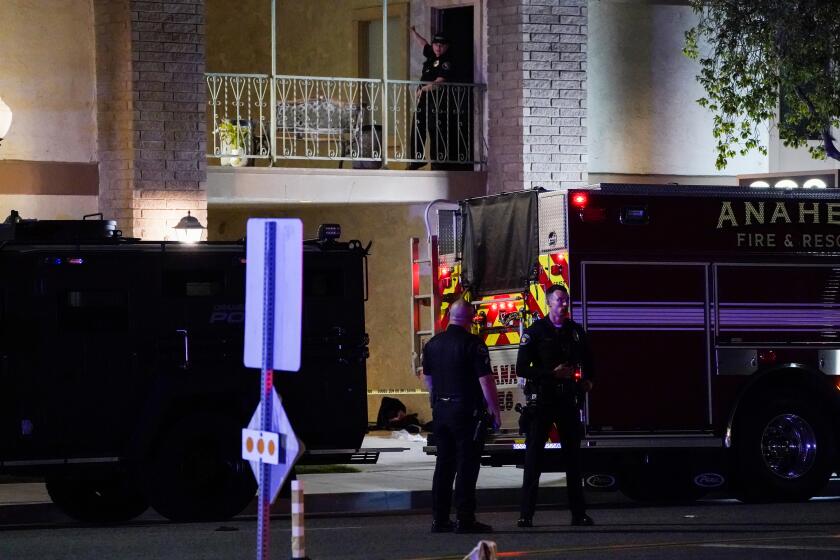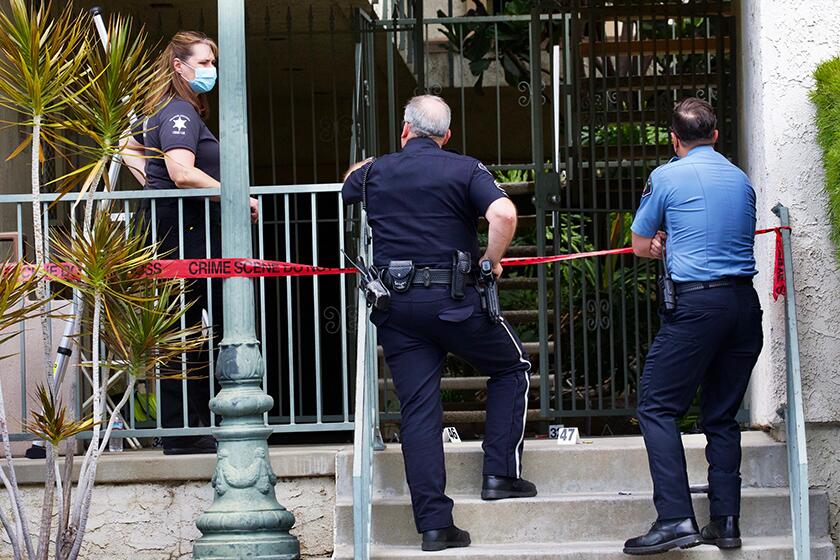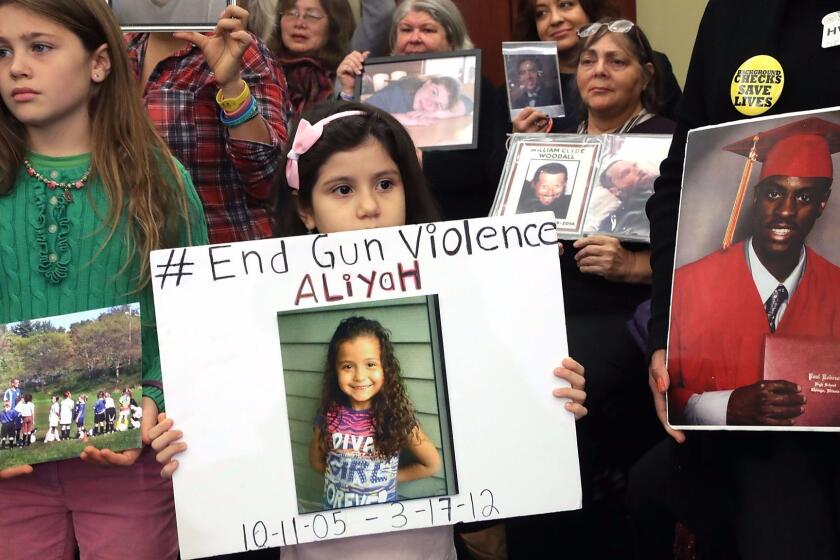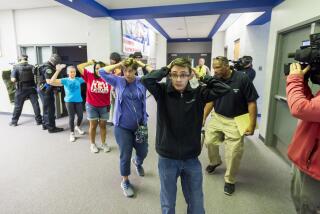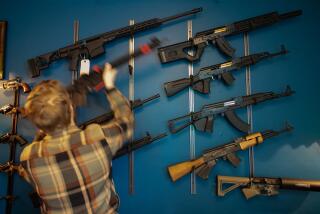With mass shootings back in the news, these tips can improve your safety and your attitude
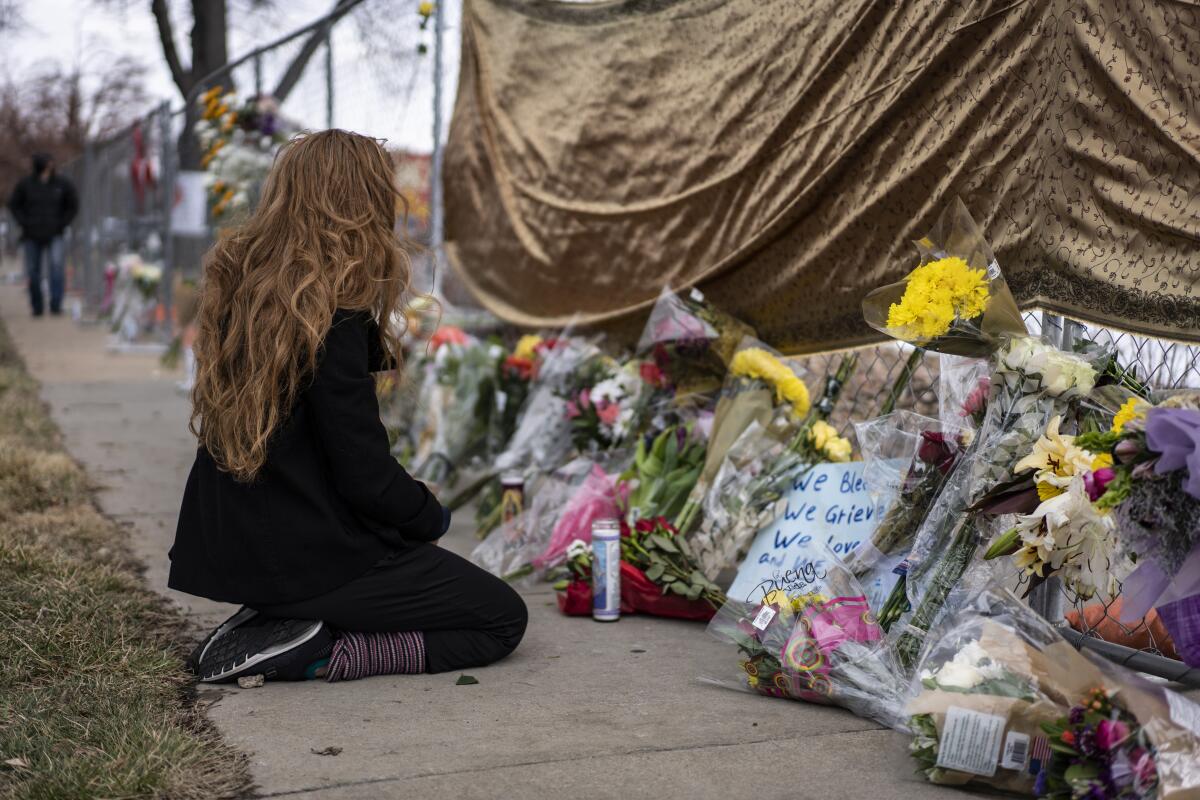
Soon Chung Park, Daoyou Feng, Xiaojie Tan, Eric Talley Suzanne Fountain, Rikki Olds. Those are just some of the names of the 22 people who have been killed recently in mass shootings in the U.S.
Four people died, including a child, in a mass shooting in Orange County on Wednesday.
On March 16, eight people were killed in Atlanta. Just a week later, on March 22, 10 people were killed in Boulder, Colo.
As stay-at-home restrictions are loosened and people return to public spaces, recent shootings are a reminder of the toll of gun violence in the United States.
According to FBI data, between 2000 and 2018, 884 people died in 277 U.S. active shooter incidents, defined as “an individual actively engaged in killing or attempting to kill people in a confined and populated area.” Active shooter incidents turn into mass shootings when four or more people are shot, according to Gun Violence Archive, a nonprofit that tracks data on gun-related violence.
In 2018, there were 39,740 gun-related deaths in the U.S., according to data from UC Davis Health. Of those, 61% were suicides, 35% homicides and just 0.2% were the result of a mass shooting.
So although mass shootings are relatively rare, they are once again occupying the news and our fears. Experts stress that being prepared and conscious of your surroundings is key if you find yourself in the middle of an active shooter situation. Here’s what you should know.
Four people were killed Wednesday evening in Orange in a shooting, police said.
Use the ‘run, hide, fight’ model
The U.S. Department of Homeland Security suggests you use the “run, hide, fight” model if you ever find yourself in a mass-shooting incident.
Brian Rauchbach, owner and head trainer at Elite Training Center in Redondo Beach, teaches several forms of mixed martial arts, as well as active shooter self-defense courses.
“The classes,” he said, “take a view into the possibility of engaging active shooters and what that means both mentally and physically for somebody who’s a civilian.”
Katie Toney, manager at Elite Training Center, emphasized the importance of active shooter training for everyday people.
“Basic citizens are the first line of defense,” Toney said. “So they kind of have to have some general idea what to do before law enforcement arrives.”
Training on the “run, hide, fight” method is commonplace in some workplaces and schools now, but what does it really mean?
Here is a list of some of the worst mass shootings in the United States in the last four years.
Run
In any public space, Rauchbach said, people should be aware of their surroundings and the “baseline” of behavior. That means seeing how people around them walk, talk and act.
“People who are engaged in making plans to do harm to other people will stand outside of that baseline because they do different things. They dress differently, they look differently, they start to engage with people differently,” Rauchbach said. “And as soon as they start to enact their plans or start walking through their plans, they definitely stand out.”
If you find yourself in a situation where there is gunfire, your natural reaction may be to freeze. It’s how long you take to thaw out and start to move that’s important, Rauchbach said.
Your main focus should be on putting as much “distance between yourself and the shooter” as possible, said Matthew Johnson, director of training at Cohen Security, a San Diego firm that provides security services and trainings on active shooting situations.
In other words, run away.
“It’s very difficult to hit a moving target,” Rauchbach said. “Either if you’re aggressing or you’re moving away from something, or you’re attacking, you still go from a position to a position, and those positions tend not to be in straight lines.”
While running, it’s important to make yourself a difficult target. That means keeping low, moving quickly and keeping quiet. You may want to scream, Rauchbach said, but that can draw attention.
Active shooter response training teaches various options for dealing with a potential mass shooting, from hiding to taking down the gunman.
Hide
If you can’t get away, Johnson said, the next step would be “to put as many obstacles or barriers in between yourself and the shooter.”
Rauchbach said there were two options for hiding: concealment and cover.
Doors, shelves and desks are forms of concealment. They’ll hide you from a shooter’s line of sight, but they won’t stop a bullet.
Things like brick walls, concrete pillars and solid steel provide the cover needed to stop bullets, but structures like that aren’t always readily available.
That’s when Rauchbach said to combine steps one and two — run from cover to concealment and vice versa — until you reach safety.
Fight
If all else fails, you may end up having to fight.
Any number of objects around you — canned food in a grocery store, books or computers in a classroom or office — can be used defensively.
Johnson says the specific object you use to defend yourself isn’t what matters, but the dedication to making the decision to fight.
“We’re talking about literally fighting for your life right here, so anything can become a defensible weapon, doesn’t matter if it’s a book, a chair,” Johnson said. “When people think ‘fight’ and ‘a weapon,’ it doesn’t necessarily have to be a knife or a firearm. It can just be something, anything that you can turn into a weapon and can be used to help defend your life.”
Once you’ve decided to fight, Rauchbach said, it’s much more effective to coordinate an attack with other people. The main goal of an attack should be to disarm and “destroy” the target.
If the shooter has a handgun, Rauchbach said, focus on attacking the limb that’s in control of the firearm. In the case of long guns, such as an AR-15, gain control the firearm by redirecting the barrel first. Then take down the shooter.
A nationwide survey finds widespread agreement among gun owners, non-gun owners, and across political parties for many gun violence prevention policies.
What else you should know
“Run, hide, fight” isn’t an exact science.
“It’s always up to the individual judgment at the scene at the time, so it’s not like if A plus B equals C then you need to run, and then there’s B plus C equals D, then you need to fight that,” Johnson said. “That’s the general guidelines, but each individual needs to determine for themself.”
In reality, there isn’t time in some of those rare mass shooting incidents to recognize what’s happening in the first place, as in the case of the six-minute Aurora, Colo., movie theater shooting in 2012. Still, education, preparation and training play a part in improving your safety, as well as your frame of mind, according to Rauchbach.
“The most important aspect of all of this is mindset,” Rauchbach said. “People focus on the physicality side of it a lot, but the mindset side is truly everything. You’re not going to engage correctly if you don’t have the proper mindset.”
The day after the shootings at Marjory Stoneman Douglas High School, in Parkland, Fla., House Speaker Paul Ryan sounded a cautious note: “I think as public policy makers, we don’t just knee-jerk before we even have all of the facts and the data.”
More to Read
Start your day right
Sign up for Essential California for news, features and recommendations from the L.A. Times and beyond in your inbox six days a week.
You may occasionally receive promotional content from the Los Angeles Times.
